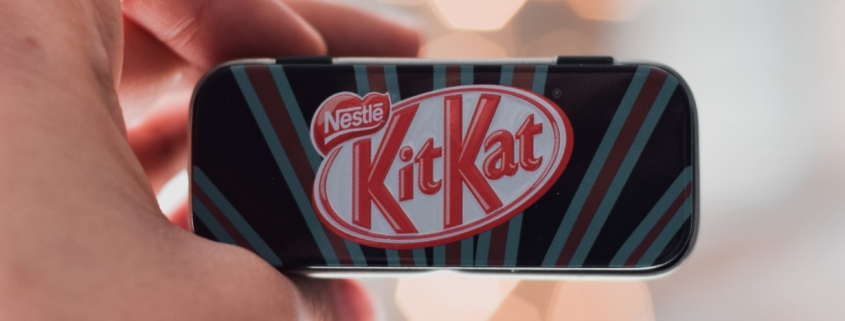Have you Noticed That Brands Are Here To Make Us Happy
In 2013, Pharrell Williams had a huge hit song called Happy. That song played everywhere. Happiness was all around us.
Now, it appears as if we really need to be happy. Having been released from our Covid confinements, we are looking for ways to get happy again. Type in “happiness” for the last month on LexisNexis, the information retrieval brand, and you will see over 25,500 articles on happiness, from how to be happy, what it means to be happy, happiness classes, happiness indices, and so forth.
In 2020, Arthur Brooks of Atlantic magazine started writing about happiness. The idea was to help readers and listeners (of his podcast) “… reframe the misery and loneliness of the coronavirus pandemic’s early days as an opportunity to think more about well-being?” It must be successful because just recently Mr. Brooks wrote his 100th happiness column.
And, it turns out that brands want to jumpstart our achievement of happiness. Today, multiple brands are selling happiness as the core of their brand promise. It is as if we need to be reminded that being unhappy should be a thing of the past and that now we should “c’mon … let’s all get happy.” At least four brands are betting that the benefit of happiness is the perfect way in which to connect to customers.
So, who wants us to be happy?
Happiness is now a promised benefit for Carvana, a brand that greatly benefited from the woes of coronavirus. Buying and selling a car from your home without risking the possibility of Covid infection or the frustration of dealing with a car dealership had a lot of pluses. What with Covid now more endemic than pandemic, Carvana wants to remind you that car buying and selling with Carvana does not drive you crazy like a dealership experience might, but drives you happy.
Stouffer’s, the frozen food brand owned by Nestlé, wants you to feel “happyfull” when enjoying its offerings. Stouffer’s has a history of making people happy. At the turn of the 20th Century, Stouffer’s was a dairy, then a milk stand selling milk, buttermilk and sandwiches and then a restaurant offering buttermilk, sandwiches and the owner’s wife’s homemade Dutch apple pie. Stouffer’s is probably hoping that we lay off the meal deliveries and make do with the satiating, convenience of its frozen foods. Happyfull is: the first bite of mac and cheese, the smell of lasagna in the oven, a belly-full of lasagna, French bread pizza, a comforting meal that everyone in the family can agree on. Rather than worry about what is for dinner, we can now be happy with a freezer full of Stouffer’s.
Ice cream is a happy food. And DQ, aka Dairy Queen, wants you to remember that. Once an ice cream parlor, DQ is now a full-fledged fast food restaurant offering hamburgers, chicken, tacos and hot dogs alongside its soft-serve ice creams treats. DQ wants us to know that it is serving happiness because “happy tastes good.” Populated with smiling, shiny, happy people, DQ’s messaging is that DQ is the place for happy: “to Share your happy, Burger your happy, Flip your happy, Scoop your happy, Dip your happy, Dunk your happy, Cheer your happy, Red spoon your happy, Tuesday your happy. At DQ, we make happy.”
Let’s not forget our dogs. Dogs were rescued and adopted in record numbers during the pandemic. If we had to be alone, let’s be alone with a dog who shows unconditional love. And, if the pandemic showed us one thing, it was that regardless of pestilence, we will do anything for our dogs. We want our dog to be happy. This premise is behind the messaging from Bark Box, a subscription service delivering dog products, services and experiences. With Bark Box, you will have and you will be “dog happy.”
Brands with happiness as a benefit are not a new selling approach. Disney has always had happiness as part of its brand. From the beginning, its purpose was to create happiness. McDonald’s began by telling us it was a “hap, hap, happy place.” Zappos, the online shoe seller, is all about “delivering happiness” with boxes covered with the word happy. Hershey’s has registered “Hersheypark Happy” for its experiential activities. For its gift store, Hershey’s tells us that we can take home Hersheypark Happy through buying a souvenir or two. Some brands have identified “joy” – a close relation to happy – as a desirable benefit to deliver. Coke has used joy as a benefit.
Just to be clear, in English, happy has a lot of meanings. Content, satisfied, delighted, blissful, glad, appropriate, willing (to do something), overjoyed, in high spirits are just a few of the meanings associated with happy. For a brand selling happiness, it is critical to know what kind of happy you are selling.
Brands that go all in with the happiness benefit must make sure that happiness is delivered. In the early 1990s a large bank billed itself as the friendly bank. Yet, when you went to the teller, all you saw was the top of the person’s head. United Airlines told us to Fly the Friendly skies of United, until those skies were no longer friendly.
Promise what you can deliver. Deliver what you promise. Know your unique, delightful type of happiness. If your goal is to make sure that we are happy, everything from people to product to service to price to place and to promotion must be focused on customer and employee happiness. The last thing your brand needs is to have customers who unhappy with your happy.



